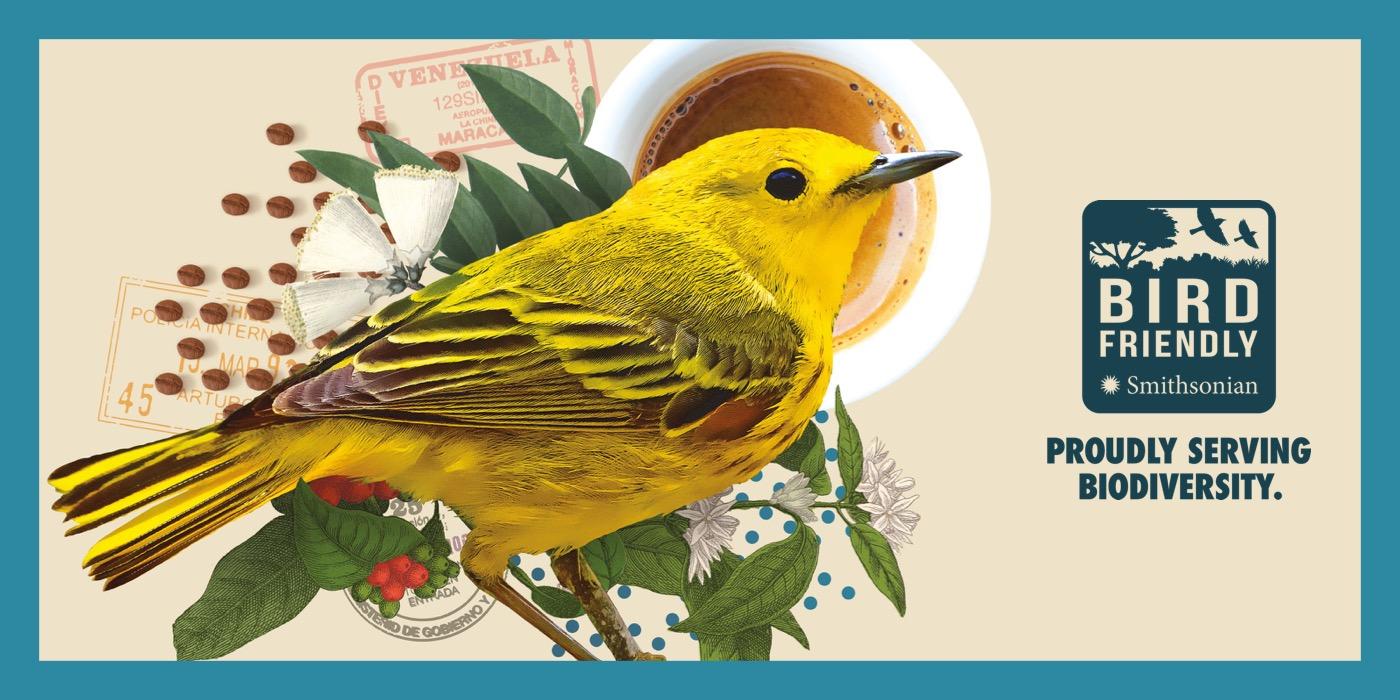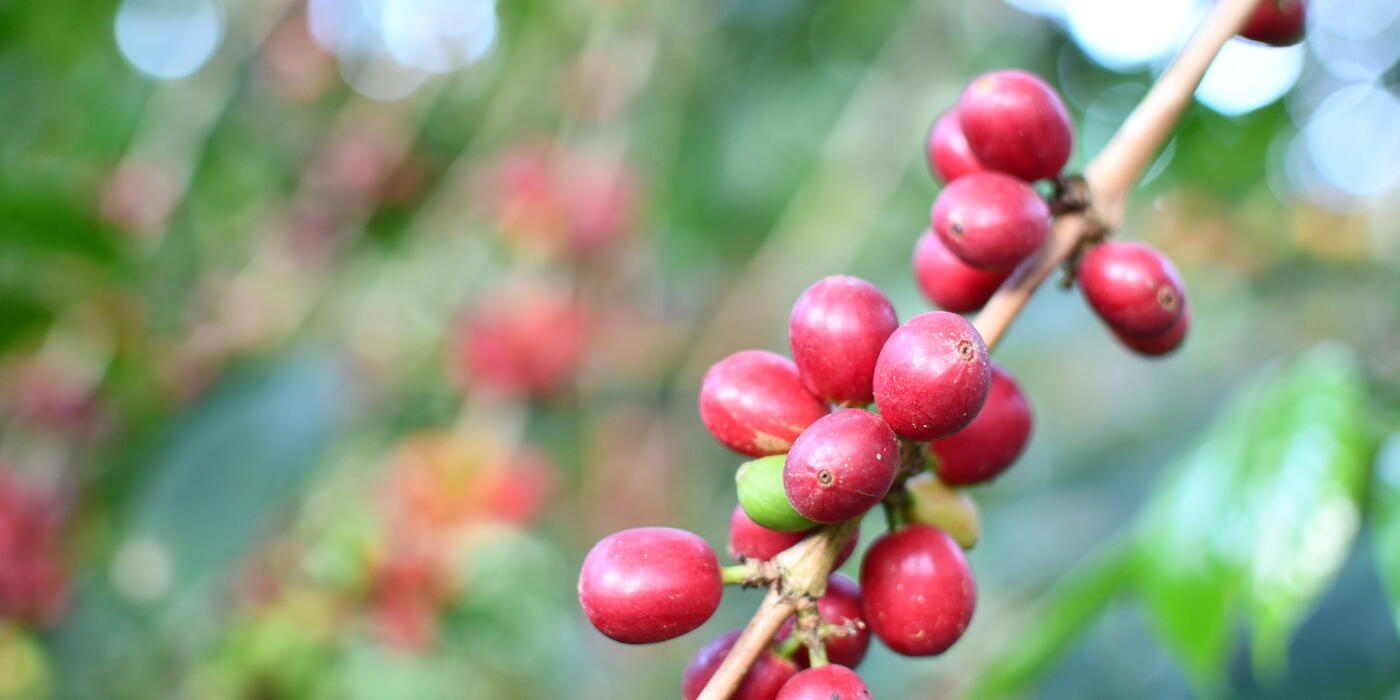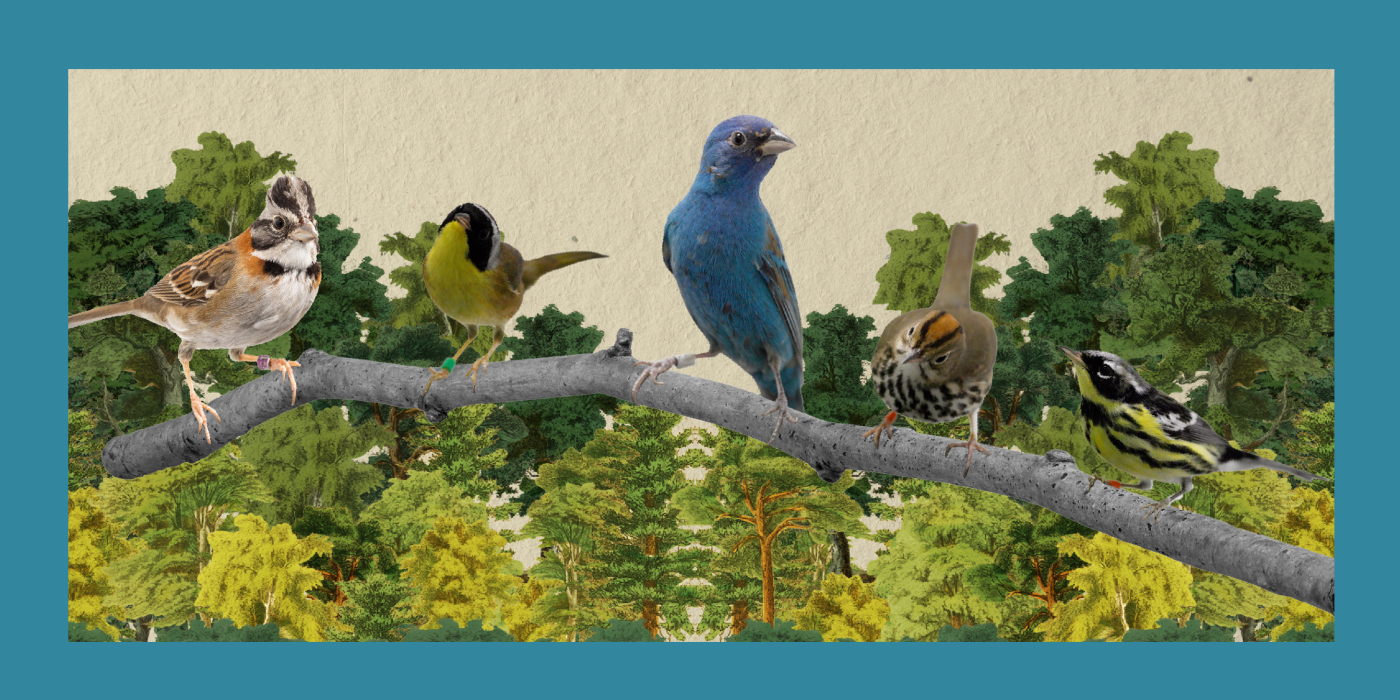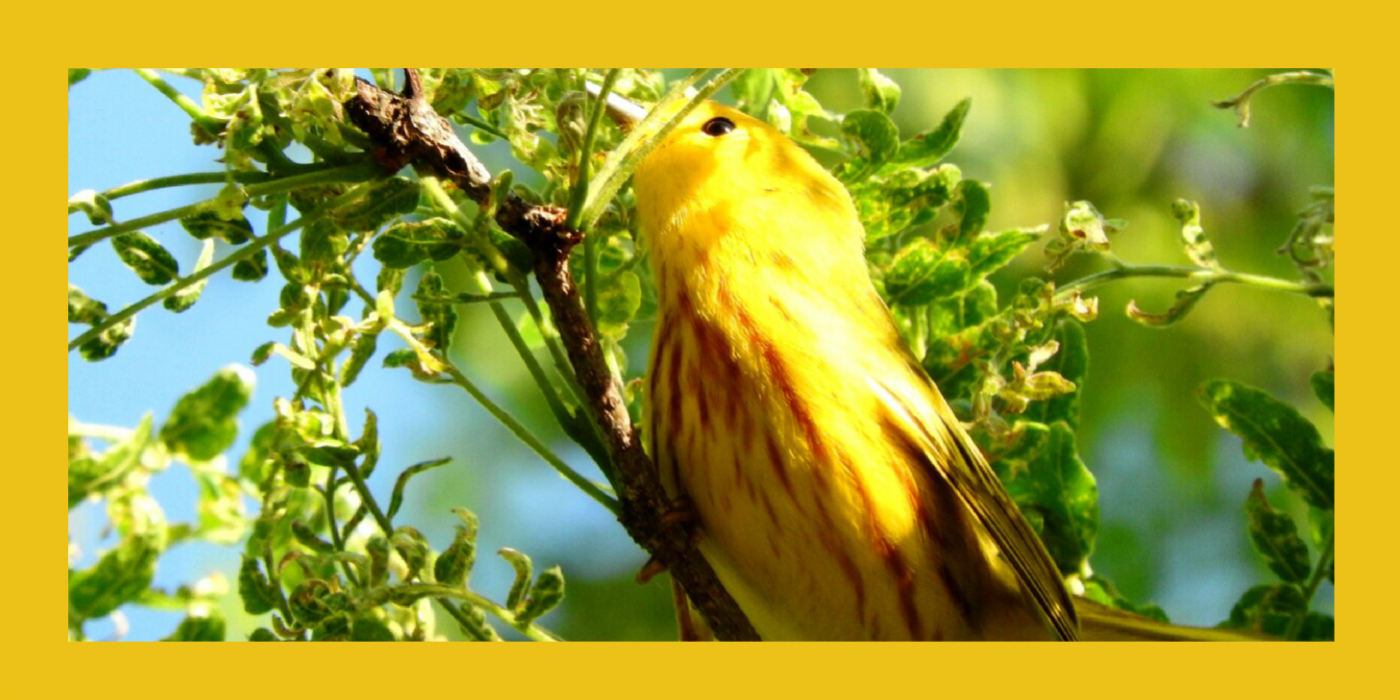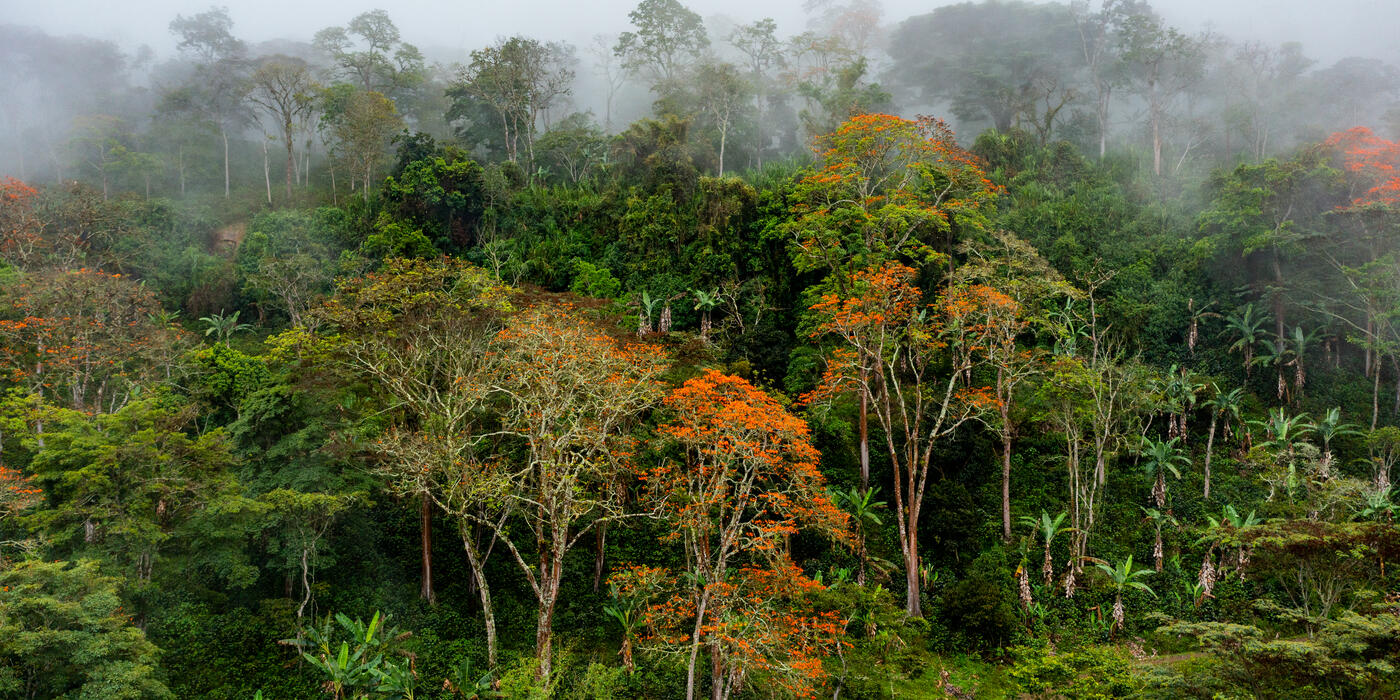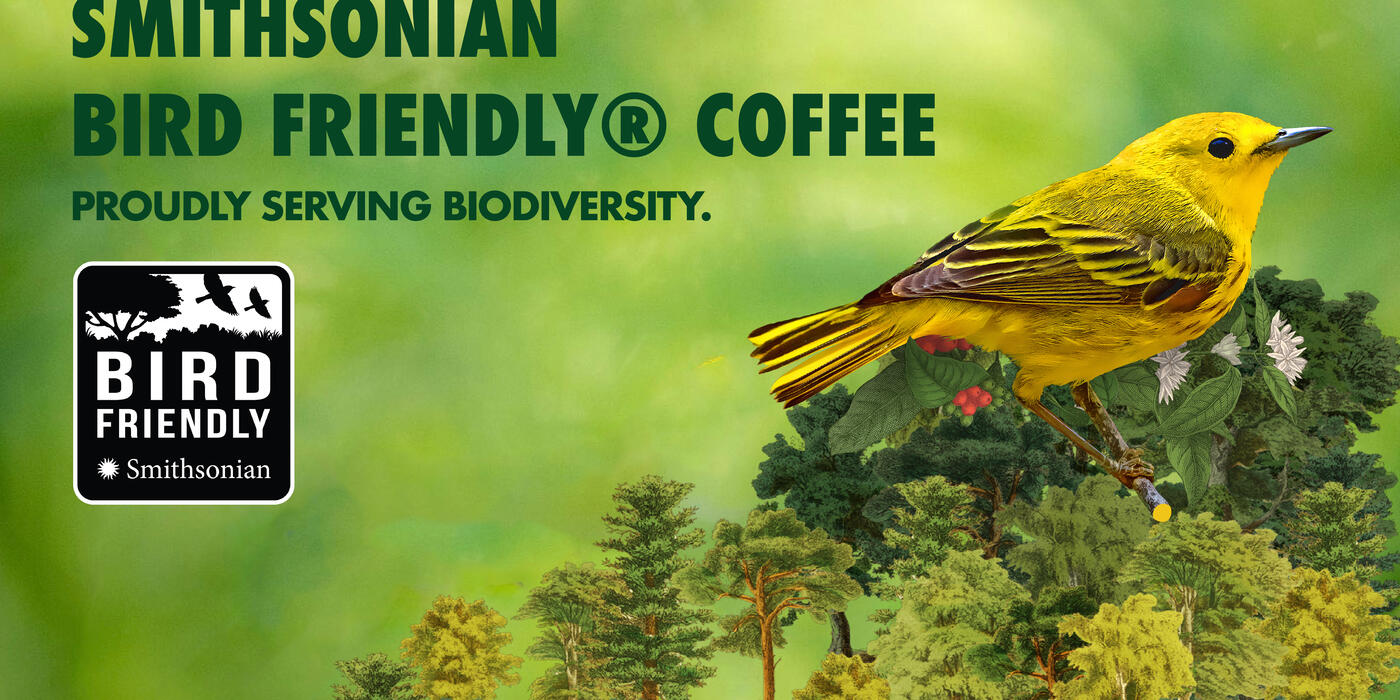About Bird Friendly Coffee
Your Coffee Is Stronger Than You Think
Bird Friendly does more than any other certification to conserve habitat for birds. Smithsonian scientists developed the Bird Friendly certification for coffee in the late 1990s to conserve habitat and protect migratory songbirds — and this trusted brand has recently expanded to cocoa.
Bird Friendly habitat ensures a mix of foliage cover, tree height, and biodiversity that creates quality habitat for birds and other wildlife. This certification provides farmers with a premium for their products, and because of stringent growing standards, the Bird Friendly program is also a critical asset in fighting climate change.
Did You Know?
- The bird population in the United States and Canada has declined by almost 30% — a total loss of 3 billion birds — across biomes since 1970 with habitat loss as a driving force.
- 75% of the world's coffee is farmed with practices that leave no place for birds, or worse, actively destroy forest habitat. When forests disappear, migratory songbirds disappear too.
- Bird Friendly farms are 100% organic certified — no harmful pesticides — so they are better for the people and the planet.
- Bird Friendly certification protects birds and habitats through the hard work of more than 4,000 Bird Friendly farmers in 14 countries growing over 36 million pounds of coffee annually.
Sustainable Development Goals
Bird Friendly coffee habitat flies above the rest by protecting a combination of foliage cover and tree diversity proven to provide quality habitat for birds and other wildlife. This work also helps in pursuit of the following United Nations Sustainable Development Goals.
Where To Next?
Buy Bird Friendly Coffee Online ›
You can support the best in organic, eco-friendly farming by shopping for your favorite Bird Friendly® certified coffees online.
Become Bird Friendly Certified ›
Learn how to become a Bird Friendly® certified coffee farmer, roaster, importer or distributor.
Live Bird Friendly® ›
Are you ready to join the Bird Friendly movement? Find out how you can make a difference for birds.
Meet the Birds Supported by Bird Friendly Coffee Farms ›
Learn about the birds that call Bird Friendly farms home — and see how you can directly support the farms they inhabit.
Ecological Benefits of Shade-grown Coffee ›
Bird Friendly coffee is certified organic, and produced on farms with a shade cover that provides important habitat for migratory and resident birds in tropical landscapes.
Bird Friendly Coffee FAQs ›
Find the answers to some of the most frequently asked questions about Bird Friendly coffee.
